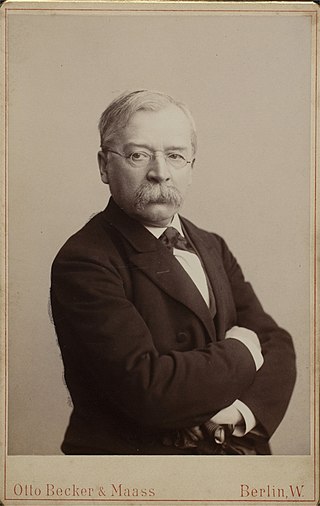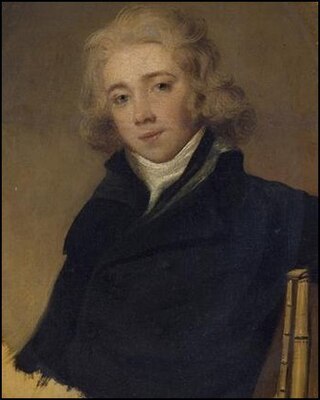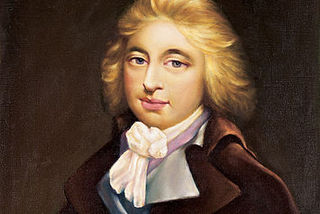Related Research Articles

Ludwig van Beethoven's Opus 1 is a set of three piano trios, first performed in 1795 in the house of Prince Lichnowsky, to whom they are dedicated. The trios were published in 1795.

Sonata, in music, literally means a piece played as opposed to a cantata, a piece sung. The term evolved through the history of music, designating a variety of forms until the Classical era, when it took on increasing importance. Sonata is a vague term, with varying meanings depending on the context and time period. By the early 19th century, it came to represent a principle of composing large-scale works. It was applied to most instrumental genres and regarded—alongside the fugue—as one of two fundamental methods of organizing, interpreting and analyzing concert music. Though the musical style of sonatas has changed since the Classical era, most 20th- and 21st-century sonatas still maintain the same structure.

The Piano Quintet in E-flat major, Op. 44, by Robert Schumann was composed in 1842 and received its first public performance the following year. Noted for its "extroverted, exuberant" character, Schumann's piano quintet is considered one of his finest compositions and a major work of nineteenth-century chamber music. Composed for piano and string quartet, the work revolutionized the instrumentation and musical character of the piano quintet and established it as a quintessentially Romantic genre.
The Piano Quintet in F minor, Op. 34, by Johannes Brahms was completed during the summer of 1864 and published in 1865. It was dedicated to Her Royal Highness Princess Anna of Hesse. As with most piano quintets composed after Robert Schumann's Piano Quintet (1842), it is written for piano and string quartet.
Pyotr Ilyich Tchaikovsky's Trio in A minor, Op. 50, was written in Rome between December 1881 and late January 1882. It is subtitled À la mémoire d’un grand artiste [In memory of a great artist], in reference to Nikolai Rubinstein, his close friend and mentor, who had died on 23 March 1881. It is scored for piano, violin, and cello.

The Cello Sonata No. 1 in E minor, Op. 38, entitled "Sonate für Klavier und Violoncello", was written by Johannes Brahms in 1862–65.
The two Serenades, Op. 11 and 16, represent early efforts by Johannes Brahms to write orchestral music. They both date from after the 1856 death of Robert Schumann when Brahms was residing in Detmold and had access to an orchestra.

Woldemar Bargiel was a German composer and conductor of the Romantic period.

Hyacinthe Jadin was a French composer who came from a musical family. His uncle Georges Jadin was a composer in Versailles and Paris, along with his father Jean Jadin, who had played bassoon for the French Royal Orchestra. He was one of five musical brothers, the best known of whom was Louis-Emmanuel Jadin.
The Cello Sonata in G minor, Op. 65, was written by Frédéric Chopin in 1846-1847. It is one of only nine works of Chopin published during his lifetime that were written for instruments other than piano. Chopin composed four sonatas, the other three being piano sonatas. The cello sonata was the last of Chopin's works to be published in his lifetime.
An organ concerto is an orchestral piece of music in which a pipe organ soloist is accompanied by an an orchestra, although some works exist with the name "concerto" which are for organ alone.
The Piano Sonata No. 2 in F♯ minor, Op. 2 of Johannes Brahms was written in Hamburg, Germany in 1852, and published the year after. Despite being his second published work, it was actually composed before his Piano Sonata No. 1 in C major, but was published later because Brahms recognized the importance of an inaugural publication and felt that the C major sonata was of higher quality. It was sent along with his first sonata to Breitkopf und Härtel with a letter of recommendation from Robert Schumann. Schumann had already praised Brahms enthusiastically, and the sonata shows signs of an effort to impress, with its technical demands and highly dramatic nature. It was dedicated to Clara Schumann.

The Piano Trio No. 1 in B major, Op. 8, by Johannes Brahms was completed in January 1854, when the composer was only twenty years old, published in November 1854 and premiered on 13 October 1855 in Danzig. It has often been mistakenly claimed that the first performance had taken place in the United States. Brahms produced a revised version of the work in summer 1889 that shows significant alterations so that it may even be regarded as a distinct (fourth) piano trio. This "New Edition", as he called it, was premiered on 10 January 1890 in Budapest and published in February 1891.

Johannes Brahms composed his Piano Trio No. 2 in C Major, Op. 87, between 1880 and 1882. It is scored for piano, violin and cello. He wrote this piece at the age of 49.

The Piano Quartet No. 3 in C minor, Op. 60, completed by Johannes Brahms in 1875, is scored for piano, violin, viola and cello. It is sometimes called the Werther Quartet after Goethe's The Sorrows of Young Werther. The premiere took place in Vienna on November 18, 1875, to an anxious public. Richard Wagner and his wife Cosima were in attendance.

The Piano Quartet in E♭ major, Op. 47, was composed by Robert Schumann in 1842 for piano, violin, viola and cello. Written during a productive period in which he produced several large-scale chamber music works, it has been described as the "creative double" of his Piano Quintet, finished weeks earlier. Though dedicated to the Russian cellist Mathieu Wielhorsky, it was written with Schumann's wife Clara in mind, who would be the pianist at the premiere on 8 December 1844 in Leipzig.
Sonatas, duos and fantasies by Franz Schubert include all works for solo piano by Franz Schubert, except separate dances. They also include a number of works for two players: piano four hands, or piano and a string instrument.
The Piano Quartet No. 2 in G major, Op. 26 by Henrique Oswald was composed in the second half of 1898. It is scored for piano, violin, viola and cello. The approximate duration is 25–30 minutes.

Jan Ladislav Dussek's Piano Sonata No. 18 in E♭ major, Op. 44, known as Les Adieux, was written and published in 1800. It was dedicated to Dussek's fellow composer and virtuoso pianist, Muzio Clementi. This sonata is the longest of Dussek's piano sonatas. This sonata had a major influence on Ludwig van Beethoven's sonata with the same nickname.
References
- 1 2 3 4 Murray, Lucy Miller (2015). Chamber music : an extensive guide for listeners. Lanham. ISBN 9781442243422. OCLC 893557941.
{{cite book}}: CS1 maint: location missing publisher (link) - 1 2 3 4 5 6 Reich, Nancy B. (2001). Clara Schumann : the artist and the woman (Rev. ed.). Ithaca [N.Y.]: Cornell University Press. ISBN 0801468302. OCLC 856430972.
- 1 2 3 4 5 Nemko, Deborah Gail (1997). Clara Schumann as innovator and collaborator: The Piano Trio in G minor, Op. 17(PhD). The University of Arizona. pp. 23, 27–36.
- ↑ Litzmann, Berthold (1913). Clara Schumann: An Artist's Life, Based on the Material found in diaries and letters, Vol. 1[translation by Grace E. Hadow] (1st ed.). London; Leipzig: Macmillan and Company; Breitkopf and Hartel.
- ↑ Anderson, Keith (2005). Liner notes: Clara Schumann: Piano Concerto in A Minor/Piano Trio in G Minor] (CD). Naxos Records. 8.557552. Retrieved 2018-01-17.
- ↑ "A Level Music Schumann Piano Trio Op. 17, Movement 1 Support Guide" (PDF). BSC Music.
- ↑ Grimes, Nicole (2021). Clara Schumann Studies. Cambridge University Press, ed. Joe Davies.